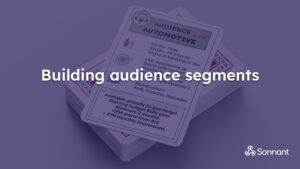Are you looking for a way to boost your brand’s reach and engagement? If so, you may want to consider advertising on podcasts. This growing medium has become a popular way for brands to connect with their target audience and increase brand awareness. In this article, we will explore the podcast advertising landscape and provide tips on how to craft successful ad campaigns that connect with your audience.
Understanding the podcast advertising landscape
Podcasts have become a cultural phenomenon over the past decade, with millions of people tuning in to listen to their favourite shows every day. As a result, podcast advertising has emerged as a powerful way for brands to reach new audiences and connect with consumers in a more intimate way.
The growth of podcast listenership
The growth of podcast listenership has been nothing short of remarkable. According to recent research, over 100 million people in the U.S. alone listen to podcasts on a regular basis. Australia and the UK also have strong, and growing, podcast listenership. This number is projected to continue to grow as more people discover the medium and more podcasts are released.
One of the reasons for the explosive growth of podcast listenership is the fact that podcasts are incredibly convenient. They can be listened to while commuting, working out, or doing household chores. Additionally, podcasts are often centred around specific topics or interests, which makes them particularly appealing to niche audiences.
Types of podcast ads: pre-roll, mid-roll, and post-roll
When it comes to podcast advertising, there are three primary types of ads: pre-roll, mid-roll, and post-roll. Pre-roll ads play at the beginning of a podcast episode, mid-roll ads play in the middle of a podcast episode, and post-roll ads play at the end of a podcast episode. Keep in mind, that Sonnant smart ad markers can places these automatically for you, saving you time and increasing your precision with brand suitaibility.
Each type of ad presents its own set of benefits and challenges. Pre-roll ads are great for building brand awareness, as they are the first thing listeners hear when they start a new episode. Mid-roll ads are ideal for promoting specific products or services, as they are typically placed in the middle of an episode when listeners are fully engaged. Post-roll ads are great for driving conversions, as they are often the last thing listeners hear before the episode ends.
Popular podcast advertising platforms
There are several popular podcast advertising platforms that allow advertisers to create and distribute their ads across a network of podcasts. One such platform is Spotify Ad Studio, which allows brands to create and manage audio ads on Spotify. Another popular platform is Triton Digital, which connects advertisers with podcasters for sponsored content opportunities. Sonnant has integrations with these platforms!
When choosing a podcast advertising platform, it’s important to consider your brand’s values and goals, as well as the types of podcasts that are most relevant to your target audience. By choosing the right platform and ad format, you can leverage the power of podcast advertising to reach new audiences, build brand awareness, and drive conversions.
Identifying your target audience
The success of your podcast ad campaign depends on how well you understand your target audience. Here are some tips for defining your ideal listener and analysing their demographics and interests.
Defining your ideal listener
Start by defining your ideal listener. Who are they? What are their values and interests? What kind of podcasts do they listen to? The more specific you can be, the better. This will help you create ads that resonate with your target audience and connect with them on a deeper level.
For example, if you’re creating a podcast about healthy eating, your ideal listener may be someone who is interested in nutrition and wellness, and who is looking for tips and advice on how to live a healthier lifestyle. They may be interested in plant-based diets, fitness, and mindfulness.
By understanding your ideal listener’s interests and values, you can create ads that speak directly to them and offer them solutions to their problems.
Analysing listener demographics and interests
Next, analyse the demographics and interests of your target audience. This can include factors such as age, gender, location, and hobbies. You can use tools such as Google Analytics and social media insights to gather this data.
For example, if you’re targeting a younger audience, you may want to create ads that are more visually appealing and use social media platforms such as Instagram and TikTok to reach them. If you’re targeting an older audience, you may want to focus on more traditional advertising methods such as radio and print ads.
It’s also important to consider the interests of your target audience. For instance, if your podcast is about travel, you may want to target people who are interested in adventure, culture, and exploring new places.
Aligning your brand with relevant podcasts
Finally, it’s important to align your brand with podcasts that are relevant to your target audience. You can research popular podcasts in your industry or niche, and reach out to the hosts or advertising platforms to learn more about advertising opportunities.
For instance, if you’re creating a podcast about personal finance, you may want to consider advertising on podcasts that focus on entrepreneurship, investing, and money management. This will help you reach an audience that is already interested in financial topics and is more likely to be receptive to your message.
By aligning your brand with relevant podcasts, you can reach your target audience more effectively and increase the chances of your ads being successful.
Crafting compelling podcast ad campaigns
Now that you’ve identified your target audience, it’s time to focus on crafting compelling ad campaigns that resonate with them. The right ad campaign can help you reach new customers, build brand awareness, and drive conversions. Here are some tips for writing engaging ad scripts, choosing the right ad format, and incorporating storytelling and humour.
Writing engaging ad scripts
Your ad script should be concise, engaging, and relevant to your target audience. It’s important to focus on the benefits of your product or service, and to use language that resonates with your audience. Avoid using jargon or overly complex language that may turn off listeners. Instead, focus on clear and concise language that clearly communicates the value of your product or service.
Consider using a conversational tone in your ad script. This can help your ad feel more like a natural part of the podcast, rather than a forced advertisement. You may also want to consider using a call-to-action in your ad script to encourage listeners to take action after hearing your ad.
Choosing the right ad format
As mentioned earlier, there are three primary types of podcast ads: pre-roll, mid-roll, and post-roll. Each type of ad presents its own set of benefits and challenges.
Pre-roll ads typically play before the podcast starts. These ads may be more effective for building brand awareness, as listeners are more likely to be paying attention at the beginning of the podcast. However, pre-roll ads may be less effective for driving conversions, as listeners may not be as engaged with the podcast yet.
Mid-roll ads play in the middle of the podcast. These ads may be more effective for driving conversions, as listeners are typically more engaged with the podcast at this point. However, mid-roll ads may be less effective for building brand awareness, as listeners may be more likely to skip over the ad. That is, of course, dependant on how / where listeners access the podcast.
Post-roll ads play at the end of the podcast. These ads may be more effective for driving conversions, as listeners are more likely to be paying attention at the end of the podcast. However, post-roll ads may be less effective for building brand awareness, as listeners may be more likely to tune out after the podcast has ended.
Consider your goals and target audience when choosing the right ad format. You may also want to experiment with different ad formats to see what works best for your brand.
Incorporating storytelling and humour
One of the benefits of podcast advertising is the opportunity to incorporate storytelling and humour into your ad campaigns. This can help your brand connect with listeners on an emotional level and make your ads more memorable.
Consider incorporating personal anecdotes, jokes, or other elements that align with your brand’s values and tone. For example, if your brand is known for its lighthearted and playful tone, you may want to incorporate humour into your ad script. On the other hand, if your brand is known for its serious and professional tone, you may want to focus on telling a compelling story that highlights the benefits of your product or service.
Ultimately, the key to crafting a compelling podcast ad campaign is to understand your target audience and what motivates them. By focusing on the benefits of your product or service, choosing the right ad format, and incorporating storytelling and humour, you can create an ad campaign that resonates with listeners and drives results for your brand.
Measuring the success of your podcast advertising efforts
Podcast advertising has become an effective way for businesses to reach their target audience. With the growing popularity of podcasts, it’s important to ensure that your ad campaigns are successful in reaching your desired audience. Finally, it’s important to track the success of your podcast ad campaigns and analyse key performance indicators (KPIs) to determine your return on investment (ROI). Here are some tips for tracking KPIs, analysing ROI, and utilising listener feedback and reviews.
Tracking key performance indicators (KPIs)
Tracking KPIs is crucial for measuring the success of your podcast ad campaigns. Common KPIs for podcast ad campaigns include the number of impressions, click-through rates, and conversion rates. Impressions refer to the number of times your ad was seen or heard by a listener. Click-through rates measure the number of times a listener clicked on your ad to learn more. Conversion rates measure the number of listeners who took a desired action, such as making a purchase or signing up for a service.
It’s important to set up tracking and measurement tools to gather this data. You can use tools such as Google Analytics, which provides insights into website traffic and user behaviour. Additionally, many podcast hosting platforms offer analytics tools that can help you track the success of your ad campaigns.
Using this data, you can optimise your campaigns over time. For example, if you notice that your conversion rates are low, you may need to adjust your ad messaging or targeting to better resonate with your audience.
Analysing return on investment (ROI)
Measuring your ROI is essential for determining the success of your podcast ad campaigns. To determine your ROI, you’ll need to compare the costs of your podcast ad campaign to the revenue generated from it. This may require some estimation or projection, but it’s important to take a data-driven approach to measuring success.
When analysing your ROI, it’s important to consider the lifetime value of a customer. For example, if a customer makes a purchase as a result of your ad, but then continues to make purchases from your business over time, the ROI of your ad campaign will be higher than just the initial purchase.
By analysing your ROI, you can determine whether your ad campaigns are worth the investment. If your ROI is low, you may need to adjust your ad messaging or targeting to better resonate with your audience and improve your results.
Utilising listener feedback and reviews
Finally, don’t forget to utilise listener feedback and reviews to improve your ad campaigns over time. Solicit feedback from listeners through social media or other channels, and use it to make adjustments and optimise your campaigns for greater success.
Listener feedback can provide valuable insights into what’s working and what’s not with your ad campaigns. For example, if listeners are finding your ads to be too long or irrelevant to their interests, you may need to adjust your ad messaging or targeting.
Additionally, reviews can provide social proof of the effectiveness of your ad campaigns. Encourage satisfied customers to leave reviews on your website or social media channels. This can help build trust with potential customers and improve the success of your ad campaigns over time.
Conclusion
Increasing your brand’s reach and engagement through podcast advertising is a smart strategy in today’s digital landscape. By understanding the podcast advertising landscape, identifying your target audience, crafting compelling ad campaigns, and measuring success through KPIs and ROI analysis, you can create impactful campaigns that connect with listeners and drive business results.
Follow Sonnant on LinkedIn.




